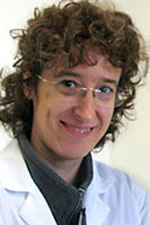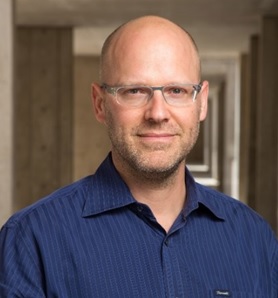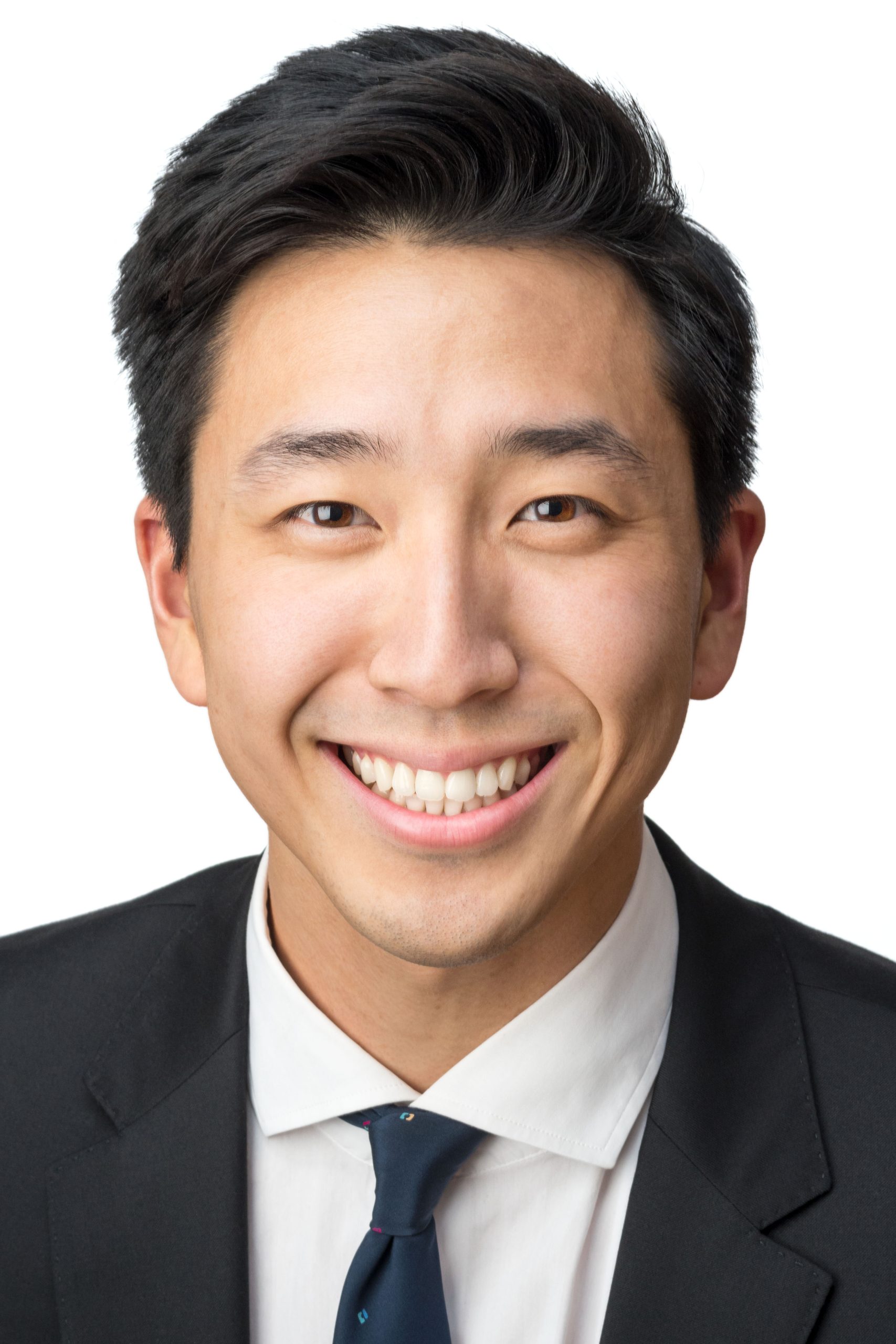Keynote: Akil Merchant, MD
Associate Professor, Medicine
Director, Imaging Mass Cytometry Shared Resource at Cedars Sinai

Akil Merchant, MD, is a NIH funded physician-scientist who focuses on developing new treatments for blood cancers such as leukemia and lymphoma. The central focus of his research is to understand how changes in the tumor microenvironment and stem cell niche regulate the development of cancer and normal hematopoietic tissues, how interactions between tumor cells, cancer stem cells and the tumor immune microenvironment can drive the progression of tumors and resistance to chemotherapies.
In January 2019, Merchant was recruited to Cedars-Sinai as a member of the bone marrow transplant program at the Samuel Oschin Cancer Center and to serve as director of the new mass cytometry core facility.
Merchant was an early access partner for IMC system from Fluidigm corporation, and for the past five years has been developing methods to apply this breakthrough imaging technology to the study of tumors and specifically hematologic malignancies. Merchant was a featured speaker at the commercial launch of the IMC system and is a recognized leader in this new field.
IMC is a highly-multiplexed, antibody based imaging system, that combines the spatial resolution of IHC with the multiplex aspects of flow cytometry. IMC allow the analysis of 40+ proteins or phosphoproteins in a single section of tissue with subcellular resolution (1um).
Talk: Single cell architecture of the immune microenvironment in lymphoma
Abstract: Multiplexed immune cell profiling of the tumor microenvironment (TME) in cancer has improved our understanding of cancer immunology, but complex spatial analyses of tumor-immune interactions in lymphoma are lacking. Here we describe the use of imaging mass cytometry (IMC) on in diffuse large B cell lymphoma (DLBCL) to characterize tumor and immune cell architecture and correlate it to clinicopathological features such as cell of origin, gene mutations, and responsiveness to chemotherapy. To understand the poor response of DLBCL to immune check point inhibitors (ICI), we compared our results to IMC data from Hodgkin lymphoma (HL), a cancer highly responsive to ICI. We created a spatial classification of tumor cells and identified sub-regions of immune activation, immune suppression, and immune exclusion within the topology of DLBCL. This is the first study to integrate tumor mutational profiling, clinical outcomes and multiplexed immuno-phenotyping of the TME into a spatial analysis of lymphoma at the single cell level.
Begonya Comin-Anduix, PhD
Adjunct Professor of Surgical-Oncology at the David Geffen School of Medicine University of California Los Angeles (UCLA)

Begonya Comin-Anduix, Adjunct Professor of Surgical-Oncology at the David Geffen School of Medicine University of California Los Angeles (UCLA), is a member of the tumor Immunology program at the Jonsson Comprehensive cancer center at UCLA. Her research focuses on three areas: optimizing immune monitoring techniques by flow or mass cytometry, studying approaches to enhance the T-cell responses to human metastatic cancers, and optimization/manufacturing of cellular product for phase I clinical trials.”
Talk: Using Flow and Mass cytometry to characterize transgenic and non- transgenic cells in whole blood from a phase 1 clinical trial
Abstract: Adoptive cell transfer with HLA-A2-0201*-NY-ESO1 neoantigen T Cell Receptor (TCR) transduced autologous T cells results in tumoral mass decrease in stage IV cancer patients. However, this response is transient following transgenic cells disappearance. Our team opted for transducing stem cells with HLA-A2-0201*-NY-ESO1 neoantigen TCR hoping to overcome the need for re-vaccinating the patients. We have infused two patients with both NY-ESO-1 transgenic stem cells and with transgenic lymphocytes to date. We are currently comparing the efficacy the combined strategies to previous single NY-ESO-1 TCR transgenic products. We will present how we used of flow- and mass-cytometry to begin the characterization of transgenic and non transgenic cells in blood of these patients, as well as characterization of final manufactured product. We will also describe the challenges and problems encountered as well as some the possible solutions we have applied so far.”
Will Alaynick, PhD
Co-Founder and Vice President of Business Development
NanoCellect Biomedical

Will Alaynick, PhD is a Co-Founder and Vice President of Business Development at NanoCellect Biomedical and serial entrepreneur in life science tools and reagents companies. He competed his BA in History of Science at the University of Washington and a PhD Biomedical Sciences at UC San Diego, HHMI and The Salk Institute for Biological Studies where he studied nuclear receptor biology. He completed a postdoc in Neurobiology at HHMI and The Salk Institute where he studied molecular genetics and electrophysiology of spinal cord development. He served as Principal Investigator for Neuroenabling Technologies (acquired ONWD), Strategic Advisor for SweetSpot Diabetes (acquired DXCM), co-founded Arima Genomics, Inc. where he served as COO and director, and co-founded Defined Bioscience, Inc. where he serves as a director.
Talk: Challenges in cell viability and nucleic acid integrity: how can microfluidics help?
Abstract: Fluorescence-activated cell sorting has been used for decades to enrich samples for downstream analysis and to plate single cells for clonal expansion—however legacy droplet-based systems suffer from high-pressure, high shear-stress, and challenges in maintaining sterility and biosafety. Microfluidic cell sorting operates at much lower pressures, has lower shear stress due to laminar flow, and is a closed system for favorable biosafety. We will present data that demonstrates the success of this technology in genomic sample preparation across several challenging cell types, such as neurons and neutrophils, and cloning workflows with delicate cells such as iPSCs where low pressure, sterile fluidics are helpful.
Michael Hicks, PhD

Dr. Michael Hicks is an Assistant Professor of Physiology and Biophysics and a member of the Sue and Bill Gross Stem Cell Research Center at the University of California Irvine. His research uses emerging technologies to address fundamental questions in skeletal muscle biology including how muscle stem cells interact with myofibers to build niches in vivo, and how diseased microenvironments influence stem cell self-renewal. He currently holds fellowships through the ICTS KL2 program and the Muscular Dystrophy Association.
Talk: Asymmetric muscle wasting in human inclusion body myositis using high dimensional mass cytometry
Abstract: Inflammatory myopathies of skeletal muscle are a collection of disorders resulting in progressive muscle weakness, debilitating quality of life, and/or death. The most common inflammatory myopathy in adults over age 50 is sporadic inclusion body myositis (sIBM) which results in an auto-immune attack of the skeletal muscle with the capacity to kill target cells, and aggregation of proteins in the skeletal muscle. A major roadblock has been a lack of tools to resolve the loss of myogenic homeostasis in sIBM disease progression which occurs in a non-uniform asymmetric pattern. Here we capitalize on transformative single-cell and imaging mass cytometry (CyTOF) to identify skeletal muscle stem cell interactions with immune and other resident cell populations from sIBM patient biopsies provided by the UCI Medical Center. Analysis of 30-antibody CyTOF and 20-antibody Hyperion mass imaging panels were used to identify dynamics of cell population subsets, immune cell infiltration, and activation states from skeletal muscle biopsy sites ranging from spared to pathognomonic. We performed multiplex phenotyping of CyTOF data in Cytobank and Visiopharm to identify highly differentiated T-cell populations infiltrating sIBM muscle myofibers.
Justin Lee
MD/PhD candidate in the UCLA-Caltech Medical Scientist Training Program

Justin Lee is an MD/PhD candidate in the UCLA-Caltech Medical Scientist Training Program and is currently completing his PhD in Bioengineering in the Shapiro Lab at Caltech. During his PhD training, he helped develop a platform to engineer thermally sensitive T-cells to control CAR T-cell activation non-invasively using focused ultrasound tissue heating. He is currently working on engineering macrophages as ultrasound reporters for non-invasive cancer diagnosis. Justin is a 2020 PD Soros Fellow and a 2020 NIH F30 Fellow working towards becoming a future physician scientist.
Talk: Engineering immune cells as ultrasound reporters for cancer diagnosis
Abstract: Breakthroughs in cellular engineering and synthetic biology have enabled the use of genetically engineered eukaryotic cells as diagnostic and therapeutic agents for a wide variety of diseases, including cancer. Unlike conventional diagnostic and therapeutic agents, engineered cells can travel to distinct sites within the body, sense their environment, perform computation, and carry out programed tasks. Macrophages are a type of immune cell that has demonstrated the innate ability to home to tumors from their initial sites of production in the bone marrow, and they play a vital role in both tumor maintenance and growth. As a result of these unique features, macrophages represent a potentially powerful cell type for both cancer diagnosis and therapy. To take full advantage of the macrophage chassis, the Shapiro group has developed gas vesicles (GV) as the first genetically encoded ultrasound reporters, and previous work in the lab demonstrated the ability to express GV genes in mammalian cells to generate ultrasound contrast in vivo. Our goal is to improve cancer diagnostic technologies by taking advantage of macrophages’ unique capabilities and engineering them with transcriptionally based cancer sensors to produce GVs specifically in the tumor microenvironment and enable imaging if deep tissues with ultrasound. To this end, using synthetic biology and cellular engineering tools, this project aims to engineer macrophages that can home to tumors and produce GVs upon sensing certain cancer signals. Flow cytometry has been critical in enabling engineering of these cells within this ongoing research.
